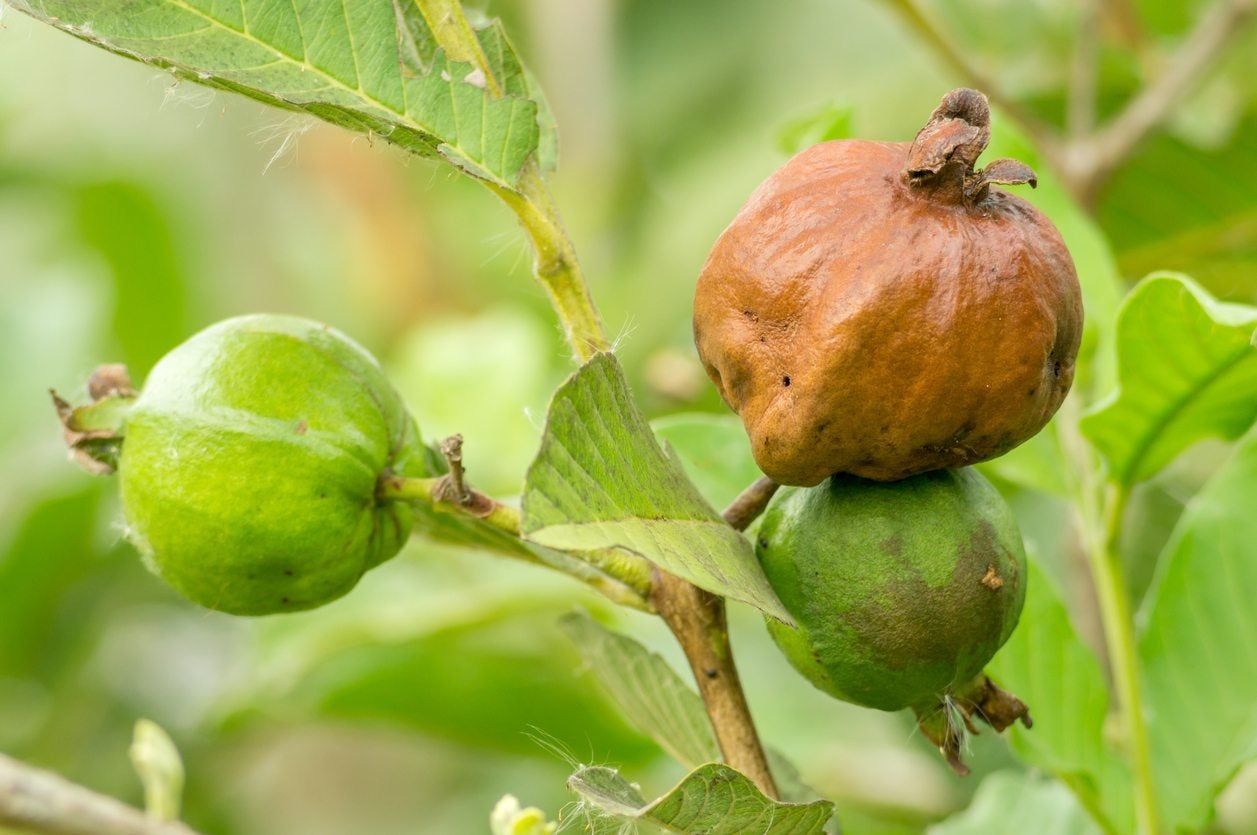Guava Disease Information: What Are Common Guava Diseases


Guavas can be really special plants in the landscape if you select just the right spot. That doesn’t mean they’re not going to develop diseases, but if you learn what to look for, you can spot problems early and deal with them quickly. Read on to learn about common guava diseases.
Guava Disease Identification
For lucky gardeners who can grow tropical fruits in their home landscapes, there’s little that beats a good guava. Fragrant and tidy, it’s an easy-care plant, most of the time. When you do have sick guava trees, they can become dramatically ill, so guava disease identification with haste is vital. Learning how to treat guava diseases is par for the course if you’re a guava owner, as is being able to detect signs of guava sickness. That’s why we’ve made this short list of common guava diseases you might encounter in your garden! Wilt. Guava wilt is a dramatic and devastating disease of plants that usually becomes noticeable with the onset of the rainy season. The plant may develop light yellow leaves and sag noticeably, prematurely shed fruits, or defoliate entirely. There’s no cure for wilt infections in plants, but good nutrition, including heavy feedings of nitrogen after fruiting, and protecting roots from damage can help stave off the disease. Stylar end rot. Only affecting fruit, this problem often surfaces once fruits are developing. You’ll notice that the bloom end of the fruit discolors, and the area spreads out until the fruit becomes brown to black, as well as very soft. Although it may appear similar to blossom end rot in garden plants like tomatoes, stylar end rot is believed to be caused by a fungal pathogen. Once fruit is infected, it’s not salvageable, but you can protect the rest of your crop with a fungicidal spray. After fruiting, picking up fallen debris, thinning your guava, and increasing air circulation by moving close-by plants further away can help prevent reinfection. Anthracnose. Anthracnose is a common fungus that is a problem for a wide range of plant types, including guava. You may notice that young shoots die back dramatically with fruit and leaves still attached, or that fruit and leaves develop small black dots that quickly grow into dark brown, sunken lesions. This fungal disease, like many others, can survive on dead tissues and are then spread by rain splashing, so if your plant has had problems in the past, a fungicide regiment may be called for. If your bush is older or hasn’t produced in a while, look for anthracnose-resistant varieties for better success. Algal leaf spot. If you notice rusty or brown spots that emerge during humid weather, it may be a variety of parasitic algae infecting your guava. Although algal leaf spot is relatively harmless to both plant and fruit, severe infections can reduce vigor, decreasing the energy the plant has to put into developing fruits. Very severe infections could result in black sunken spots on the guava fruit itself. The best treatment is to do all you can to decrease the humidity around your plant, including pruning it and nearby plants to allow better airflow to all parts of the canopy. Algae thrives on high relative humidity, so the more the wind can blow through, the less likely the infection is to survive next season.
Sign up for the Gardening Know How newsletter today and receive a free copy of our e-book "How to Grow Delicious Tomatoes".

Kristi Waterworth was a regular contributor to Gardening Know How for many years, answering countless queries on plant pests and diseases.